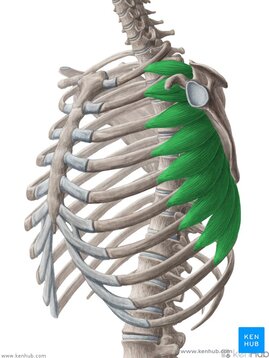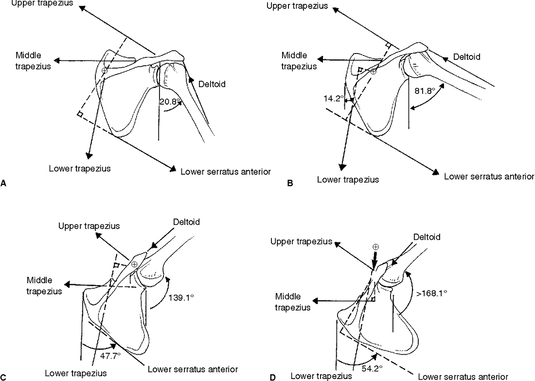|
One of my favorite body parts to treat is the shoulder. Maybe because I relate to patients who have shoulder pain because of my own history, but maybe because it's like a puzzle with a ton of moving parts. The rockstar of the shoulder, of course, is the rotator cuff. But let's take a moment and talk about the often-times forgotten unsung hero - the Serratus Anterior. With 17 muscles attaching to the scapula (shoulder blade), it's really easy to get lost in the complexity of it. Everything has to work "just-so". When we look at how the shoulder moves as we raise our arms either out in front or to the side, our shoulder blades move as well. This scapular motion allows us to reach above our heads without pinching or putting more compression on the rotator cuff tendon. Source: Complete Anatomy So without further ado.... let's introduce the star of the show - the Serratus Anterior. This amazing, broad muscle attaches on the underside of the shoulder blade (sandwiched between the ribs and the scapula) and inserts into the first 8 (of 12) ribs. It gets its name from the Latin root "serrare" - meaning "to saw" based on its jagged appearanace on the ribcage. When it contracts, it works to rotate the shoulder blade upwards and wrap around your torso as seen in the video above. If the shoulder blade didn't go through this rotation, it would actually contribute to pinching or impingement of the rotator cuff tendons in the subacromial space. The second function of the Serratus Anterior is that it keeps the shoulder blade close to the trunk. Without it, it would peel away, causing the shoulder blade to stick out or become more visibly prominent. Because your shoulder blade is not anchored by any ligaments except at the humerus and clavicle, it relies on the synchronization and stabilization through muscle co-contractions. People who have significant weakness in their serratus anterior will often exhibit more prominent, pronounced borders of their shoulder blades through movements of their shoulder girdle as seen in the video below. (hint: focus on the right side) While there are many exercises that are useful to help strengthen this all-important muscle, here is a quick and simple one that I like to give violinists/violists to help build the endurance of their shoulders to help them be able to hold their instruments up for longer periods of time. Remember - it is highly uncommon for a single muscle to work by itself without having other supporting players involved. The shoulder is no exception. Make sure that you take time to put in the effort to create good balance throughout your body, but particularly in the shoulder. Having a good, solid foundation at the shoulder blade will help you be able to move more freely and improve the overall dexterity in your wrist and fingers.
That's it for this week! Til next time.... Stay happy and healthy! 4/27/2021 03:15:05 am
This blog is very nice and useful a blog info useful. There is so much to learn through this blog. So thank you for sharing this blog
Reply
5/3/2021 02:33:41 am
Hello,
Reply
5/4/2021 09:56:42 pm
Nice to read your post. I am reading your post from first to last. Thanks for sharing with us.
Reply
Leave a Reply. |
AuthorDr. Janice Ying is a Los Angeles-based Physical Therapist. She is board-certified Orthopedic Physical Therapy Specialist and is regarded as a leading expert in the field of Performing Arts Medicine and the development of cutting edge injury prevention and rehabilitation programs for musicians. DisclaimerThe information on this website is intended for educational purposes and should NOT be construed as medical advice. If you have or think you have a health-related issue which needs to be addressed, please seek the help from your local licensed medical professional.
Archives
October 2020
Categories
All
|
We would love to see you soon!
|
© Opus Physical Therapy and Performance - 2021 - All Rights Reserved



 RSS Feed
RSS Feed